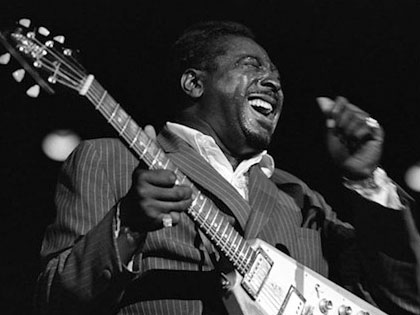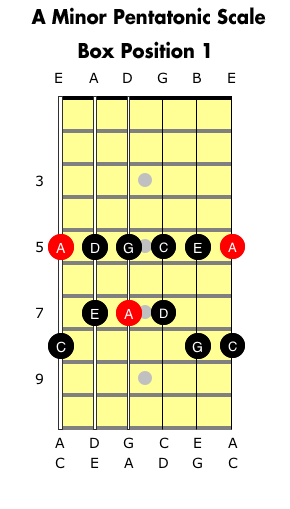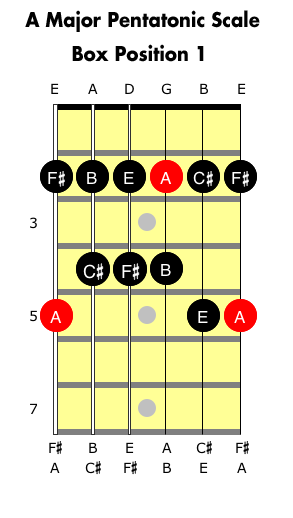 The pentatonic scales are the main blues guitar scales used for blues leads. This simple scale is easy to learn but hard to play well. The blues is not in the notes… it’s in the feeling in which those notes are played.
The pentatonic scales are the main blues guitar scales used for blues leads. This simple scale is easy to learn but hard to play well. The blues is not in the notes… it’s in the feeling in which those notes are played.
But still, learning to play the pentatonic scales on guitar is the starting point for developing your blues improvisational skills. Once you know the scale you can begin to add the emotion that makes that scale “work” as something that will move a listener.
Two Pentatonic Scales
There are two pentatonic scales… a minor and a major version. Both are commonly used but the minor is probably the one that is used in the majority of what most people call blues music. The major scale is also used but it depends on the type of blues song as to whether it really works or not.
And most great blues guitarists move freely between major and minor scales when playing the blues. They respond to the chord progression and use the scale that fits the best. There are also many passing notes that figure into that blues feeling and great players use these as well.
In fact, the notes commonly called the “blue notes” (the flattened third, flattened, fifth, and flattened seventh) are not in either scale explicitly but are often used in blues solos to get that feeling that connects with the listener. We aren’t talking about those blue notes in particular here, but you’ll get a sense as you watch the video how they are used. Most blues guitarists bend or slide into these notes and that is one reason they have an extra emotional component when played on the guitar.
And the guitar is in many ways the perfect instrument for blues because the strings can be bent and prodded to make notes and sounds that fit the blues tonality and emotional requirements.
Penta Means Five
Penta comes from the Greek word for five so the pentatonic scales, both major and minor, consist of just 5 notes. The typical major scale usually consists of 7 notes.
Why just 5 notes?
These notes seem to fit easily together and offer a great deal of flexibility which is required for great blues (or jazz) improvisation. That’s why musicians use them… because they work.
So if you want to begin your blues journey you need to be able to play both pentatonic scales as a basis for a solid foundation for you blues guitar leads work. Let’s get started.
The Blues Box
The position used to play the pentatonic scales on guitar is often called the blues box. This “position” can be moved around the fretboard to change keys and once you learn the basic position it’s easy to play the scales in other keys.
Here’s some diagrams that explain what I mean in the key of A.






Aren’t those 6ths in the G major scale and not thirds? Confused.[] Reply:June 6th, 2011 at 8:13 amThey’re ievertnd thirds meaning the root note is the one with the higher pitch. Looked at the other way around, they would indeed be a 6th, but you always have to figure out where the root is, and work from there.[]
Sorry I don’t understand your question Omshi…